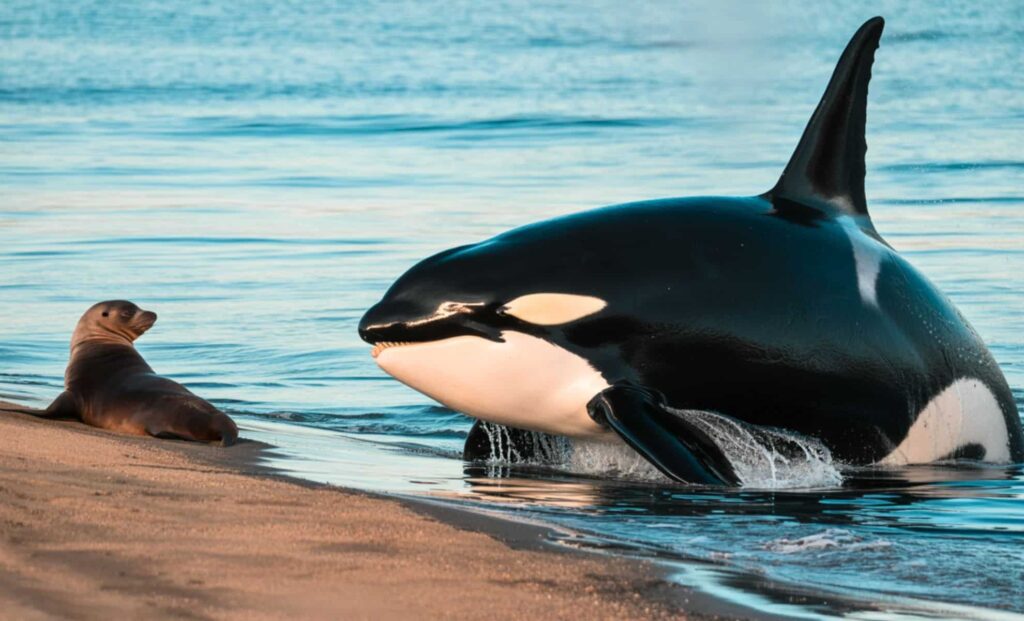For millions of years, dolphins, and orcas have reigned as apex predators of the world’s oceans—fast, intelligent, and remarkably adapted to aquatic life. But new research published in Proceedings of the Royal Society B reveals a striking evolutionary reality: these cetaceans have reached an irreversible threshold in their transition from land to sea.
This milestone isn’t symbolic—it’s anatomical, physiological, and deeply consequential. The species’ adaptation to life in water has become so complete that a return to land is now biologically impossible. And in a time of accelerating climate change, that irreversible path raises urgent questions about resilience, adaptability, and long-term survival.
Led by evolutionary biologist Bruna Farina of the University of Fribourg, the study analyzed evolutionary transitions across 5,600 mammalian species. The findings confirm what evolutionary theory has long suspected: the leap to full aquatic life closes the door behind it. For dolphins and orcas, evolution has become a one-way street.
An Irreversible Path Confirmed
The research is grounded in a key evolutionary concept: Dollo’s Law, which suggests that once complex traits are lost during evolution, they are unlikely to re-evolve. Farina’s team tested this hypothesis across mammals using a newly curated global database of life-history traits.

They categorized species into four ecological classes—fully terrestrial, semi-aquatic, aquatic but tied to land, and fully aquatic. The analysis revealed a definitive boundary: while transitions between land and semi-aquatic life are relatively common and reversible, no lineages have ever reversed from fully aquatic back to terrestrial.
The study found:
“Transitions towards fully aquatic life occurred four times independently in the mammalian tree (in Cetacea, Sirenia, Pinnipedia and Desmostylia), but no reversals were detected.”
The implication is not just theoretical. Full aquatic adaptation requires deep structural changes: the transformation of limbs into flippers, internalization, or loss of hind limbs, and reproductive systems that function exclusively in marine environments. Cetaceans give birth in water and lack the musculature or skeletal features necessary to support weight on land.
As the authors put it:
“The shift to a fully aquatic lifestyle leads to major morphological and physiological changes, such as the reduction of limbs and specialized reproductive systems that are incompatible with terrestrial life.”
Evolution Without a Return Clause
This one-way transition reveals a subtle but powerful contradiction in evolutionary biology: specialization reduces flexibility. Cetaceans are supremely adapted to their niche. That success comes at the cost of future adaptability.


In the context of Earth’s current climate trajectory, this is especially significant. Marine environments are rapidly transforming under the stress of ocean acidification, warming waters, industrial noise, and overfishing. While other mammals might shift range or behavior to cope, fully aquatic species—like orcas and dolphins—are pinned to increasingly volatile ecosystems.
The study warns that this evolutionary inflexibility has consequences:
“A unidirectional transition into an ecological state, such as fully aquatic life, may be an evolutionary trap if environmental conditions change.”
In other words, when a lineage cannot adapt out of a degrading habitat, extinction risk escalates. While not predictive, the research reframes how scientists and conservationists must think about long-term species resilience.
Adaptation Becomes Vulnerability
Dolphins and orcas display many traits shaped by millions of years of marine specialization: streamlined bodies, echolocation, cooperative hunting strategies, and complex social structures. Their physiology supports high-energy foraging and long-range travel across vast marine territories.
But these same traits are now liabilities in unstable conditions. The reliance on dense fish stocks, thermal regulation in deep water, and narrow breeding ranges makes cetaceans acutely sensitive to shifts in ocean health.
The study’s findings align with global conservation data. According to the IUCN Red List, numerous cetacean species face threats ranging from entanglement and ship strikes to ecosystem collapse. While the paper does not provide direct conservation recommendations, it reinforces a growing scientific concern: that the irreversible nature of some evolutionary paths must be factored into extinction risk models and biodiversity policy.
Implications Beyond the Ocean
Though focused on marine mammals, the research opens broader evolutionary and ecological questions. Are other species—or entire clades—trapped in similarly inflexible states? Are evolutionary bottlenecks more common than currently understood? What happens when highly specialized species face rapid environmental shifts with no viable adaptive route?
The authors suggest future research could explore whether the same patterns apply to other vertebrate groups, particularly amphibians and reptiles. They also note the potential interaction between irreversible adaptation and ecological fragility.
“Understanding how constraints and irreversibility influence evolutionary trajectories is critical for assessing the long-term viability of specialist lineages,” they conclude.
In essence, the study offers a reminder: evolution does not guarantee resilience. Sometimes, it perfects a form so completely that the next change—ecological or environmental—becomes an existential test. And in the case of dolphins and orcas, evolution has made its decision. The sea is their only home—and there is no turning back.

